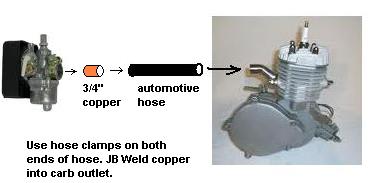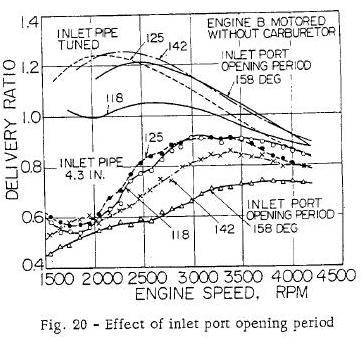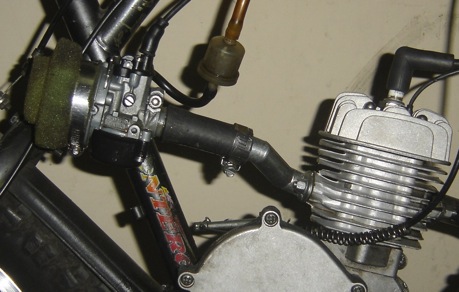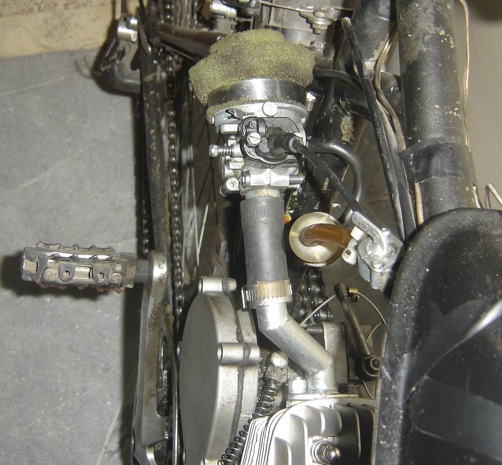|
This is a low-cost way of significantly improving your ability to climb inclined streets at low rpm's. I did it to my 48cc HT engine and highly recommend it.  The following graphs are from a research paper on this subject. "Delivery ratio" is the ratio of air/fuel delivered into the cylinder to the volume of the cylinder. A .8 ratio means that the cylinder is filled 80% with air/fuel. More delivery of air/fuel equates to more engine power. The inlet port distance is the distance between the cylinder (at the intake port) and the carb slide. The standard Grubee engine distance is around 3.5 inches. Below you can see the difference between 6.3 and 10.3 inch long intake tracts. The 10.3 is better for low rpm power, but the 6.3 is better above 3000 rpm.  Below you can see the graph depicting the best intake port timings for a 4.3" distance between cylinder (at the intake port) and carb slide (the bottom group), and for a "tuned" distance of 35.7" (the top group). The paper stated "The most suitable period of [intake] port opening for the tuned inlet pipe is longer than that for the shortest one. Therefore, it is evident that the effect of the inlet pipe can be fully utilized with an opening period longer than the usual one." That equates to saying that if you use an intake extension tube then you need to lower the intake port for more "open" degrees for the best fuel delivery ratio (ie: power). This graph shows a port open period of 142° (71° BTDC) as being the best, but keep in mind how excessively long the inlet pipe is and that with a more usable inlet distance of around 6.5" the best port period will not be as long. From my testing I found that 62° BTDC did not give any advantage over 60° BTDC.   JNMotors has a 4" long offset extended intake manifold that also works as an intake extension. It is only $11. Connecting the carb to it gives a total intake length of 5 inches. My setup pictured below is with an additional automotive hose 2.5" long which renders the total length at 7.5". It works really good and doesn't require tying the carb to the frame to keep it from bouncing up and down going over bumps.   |